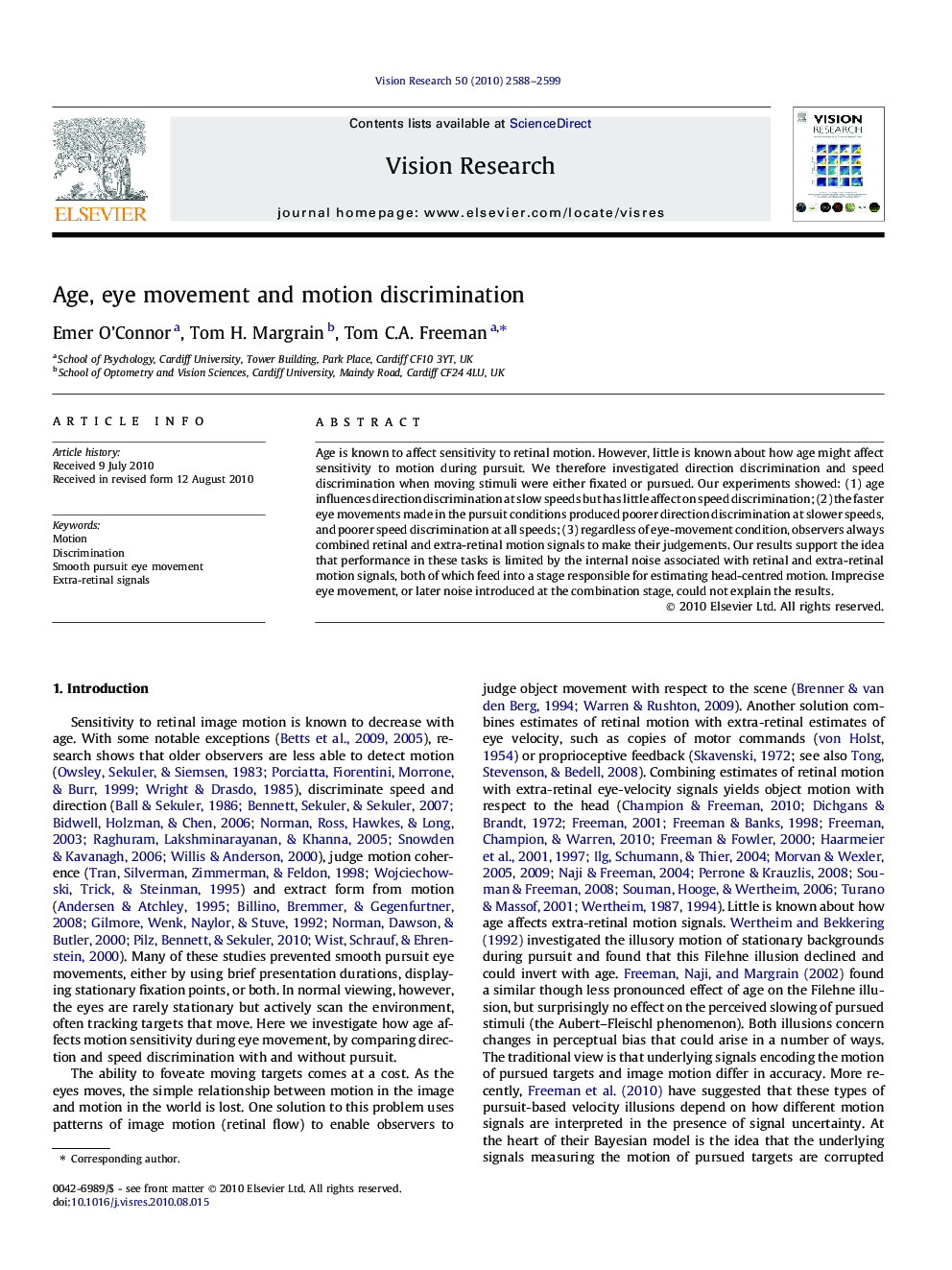| Article ID | Journal | Published Year | Pages | File Type |
|---|---|---|---|---|
| 6203826 | Vision Research | 2010 | 12 Pages |
Age is known to affect sensitivity to retinal motion. However, little is known about how age might affect sensitivity to motion during pursuit. We therefore investigated direction discrimination and speed discrimination when moving stimuli were either fixated or pursued. Our experiments showed: (1) age influences direction discrimination at slow speeds but has little affect on speed discrimination; (2) the faster eye movements made in the pursuit conditions produced poorer direction discrimination at slower speeds, and poorer speed discrimination at all speeds; (3) regardless of eye-movement condition, observers always combined retinal and extra-retinal motion signals to make their judgements. Our results support the idea that performance in these tasks is limited by the internal noise associated with retinal and extra-retinal motion signals, both of which feed into a stage responsible for estimating head-centred motion. Imprecise eye movement, or later noise introduced at the combination stage, could not explain the results.
Research highlights⺠Age influences direction discrimination at slow speeds but has little affect on speed discrimination at any speed. ⺠Discrimination during pursuit generally worse than during fixation. ⺠In both case, the combination of retinal and extra-retinal motion signals limits performance, as opposed to either motion cue alone.
